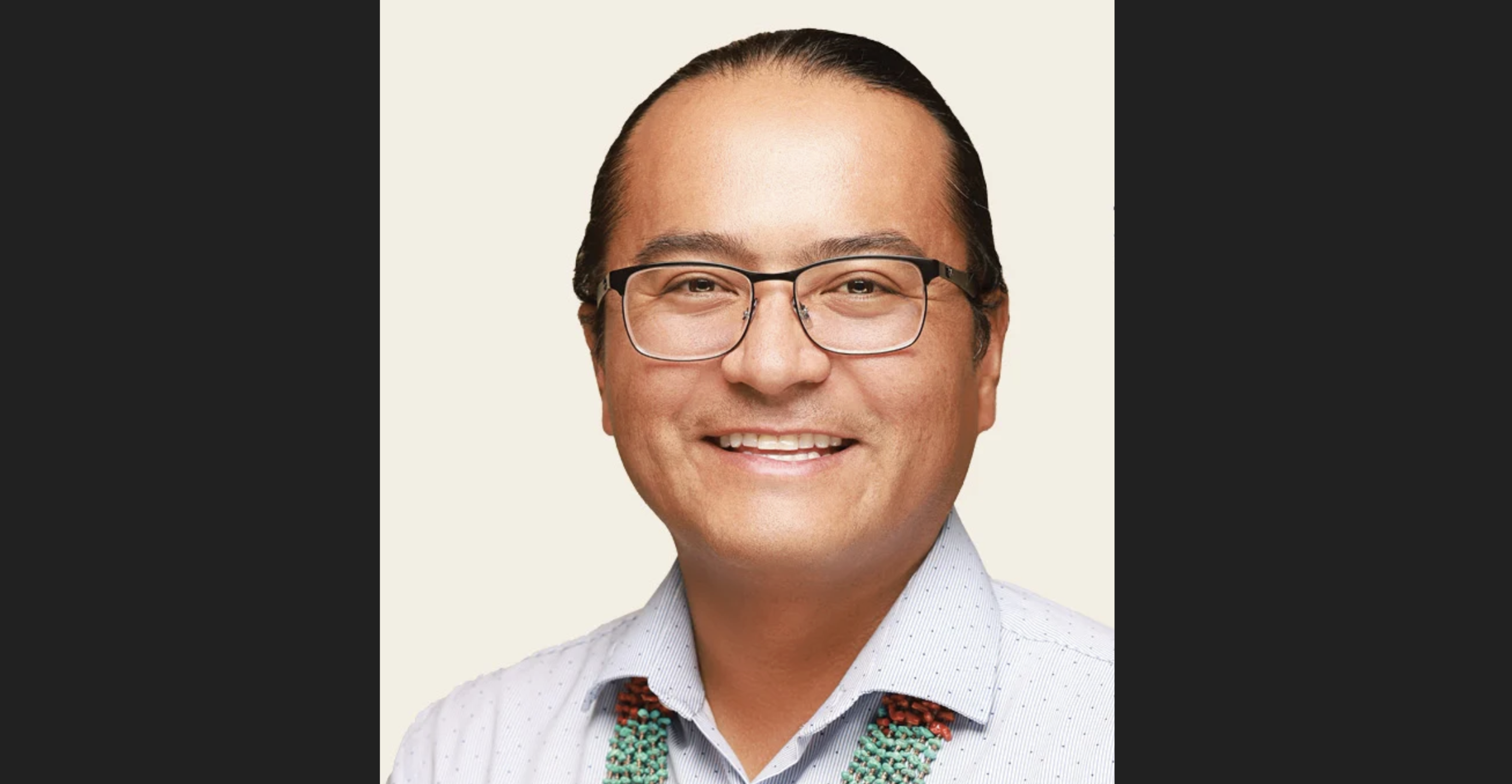
- Details
- By Native News Online Staff
Navajo Nation President Buu Nygren was inaugurated on Tuesday, Jan. 10. At 36, Nygren is the youngest person ever elected President of the Navajo Nation.
He joined Native News Online on last week’s Native Bidaské (Spotlight). He was interviewed by Levi Rickert, editor of Native News Online.
Nygren, who grew up in humble beginnings on the Navajo Indian Reservation, overcame many obstacles on his way to becoming the Navajo Nation president. He lived in a 10-foot travel trailer with no electricity and no running water.
“I grew up with no electricity, no running water, being on a bus for two hours just to get to school," Nygren told Rickert. "And so those are some of the conditions I grew up with having a mom that struggled with alcoholism, and then eventually it took her life. As president of the Navajo Nation now, I want to make sure that’s at the center of all the decisions that I make is how do we cover the basic necessities to be a strong Nation.”
Want more Native News? Get the free daily newsletter today.
Nygren spoke about fixing the multitude of infrastructure issues the Navajo Nation faces. He sees the lack of good roads as a major infrastructure problem on tribal land.
“There’s thousands of miles of dirt roads, and then there’s hundreds of miles of paved roads," Nygren said. "We need to come up with creative solutions to open up more gravel pits that are that gravel that’s ready for paving highways..we got to make it easier for EMS and public safety to get out there. And to make sure that school bus routes are taken care of as well because our kids need to get to schools safely."
With over 80,000 confirmed cases of COVID-19 and almost 2,000 deaths from the virus since March 2020, the Navajo Nation served as the epicenter for COVID-19 in Indian Country. As a result, the previous administration implemented strict stay-at-home orders, curfews, and face mask requirements. Rickert asked Nygren if he was ready to lift the mask mandate still in effect on the Navajo Nation.
“We need to completely open 100 percent. Because all surrounding communities around the Navajo Nation are 100 percent open," Nygren responded. "We’re the only ones that are maintaining this and it’s very difficult for normal Navajo people. As president, I want to make sure that the Navajo people have access to their government because a lot of them need just basic services or basic health right now. So as president, I’m actually working on making sure that we do lift that mandate and make it optional.”
To hear the entire conversation, watch the episode of Native Bidaske below or on YouTube.
Native Bidaské is produced by Native News Online weekly and streamed on Facebook, Twitter, and YouTube every Friday at 12 noon - Eastern Time.
More Stories Like This
Native News Weekly (August 25, 2024): D.C. BriefsUS Presidents in Their Own Words Concerning American Indians
Indigenous Actor Elaine Miles Reports Detention by Alleged ICE Agents
Happy Thanksgiving from Native News Online
Coming Up on Native Bidaské: Behind the Animation: Joey Clift Talks “Pow” and Native Storytelling
Help us tell the stories that could save Native languages and food traditions
At a critical moment for Indian Country, Native News Online is embarking on our most ambitious reporting project yet: "Cultivating Culture," a three-year investigation into two forces shaping Native community survival—food sovereignty and language revitalization.
The devastating impact of COVID-19 accelerated the loss of Native elders and with them, irreplaceable cultural knowledge. Yet across tribal communities, innovative leaders are fighting back, reclaiming traditional food systems and breathing new life into Native languages. These aren't just cultural preservation efforts—they're powerful pathways to community health, healing, and resilience.
Our dedicated reporting team will spend three years documenting these stories through on-the-ground reporting in 18 tribal communities, producing over 200 in-depth stories, 18 podcast episodes, and multimedia content that amplifies Indigenous voices. We'll show policymakers, funders, and allies how cultural restoration directly impacts physical and mental wellness while celebrating successful models of sovereignty and self-determination.
This isn't corporate media parachuting into Indian Country for a quick story. This is sustained, relationship-based journalism by Native reporters who understand these communities. It's "Warrior Journalism"—fearless reporting that serves the 5.5 million readers who depend on us for news that mainstream media often ignores.
We need your help right now. While we've secured partial funding, we're still $450,000 short of our three-year budget. Our immediate goal is $25,000 this month to keep this critical work moving forward—funding reporter salaries, travel to remote communities, photography, and the deep reporting these stories deserve.
Every dollar directly supports Indigenous journalists telling Indigenous stories. Whether it's $5 or $50, your contribution ensures these vital narratives of resilience, innovation, and hope don't disappear into silence.
 The stakes couldn't be higher. Native languages are being lost at an alarming rate. Food insecurity plagues many tribal communities. But solutions are emerging, and these stories need to be told.
The stakes couldn't be higher. Native languages are being lost at an alarming rate. Food insecurity plagues many tribal communities. But solutions are emerging, and these stories need to be told.
Support independent Native journalism. Fund the stories that matter.
Levi Rickert (Potawatomi), Editor & Publisher

